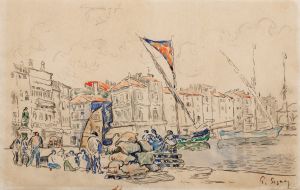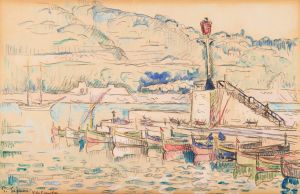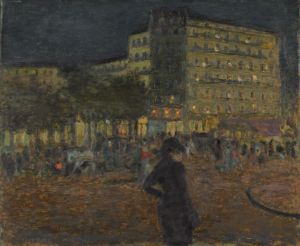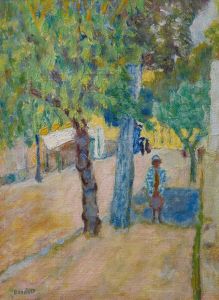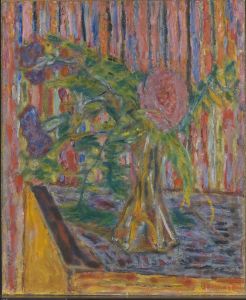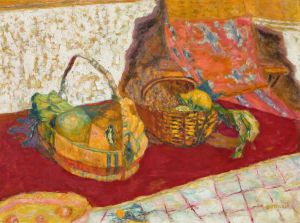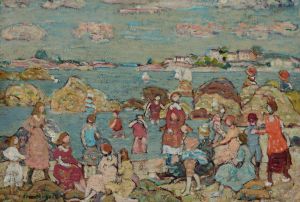
Saint-Tropez
A hand-painted replica of Pierre Bonnard’s masterpiece Saint-Tropez, meticulously crafted by professional artists to capture the true essence of the original. Each piece is created with museum-quality canvas and rare mineral pigments, carefully painted by experienced artists with delicate brushstrokes and rich, layered colors to perfectly recreate the texture of the original artwork. Unlike machine-printed reproductions, this hand-painted version brings the painting to life, infused with the artist’s emotions and skill in every stroke. Whether for personal collection or home decoration, it instantly elevates the artistic atmosphere of any space.
"Saint-Tropez" is a painting by the French artist Pierre Bonnard, created in 1904. Bonnard, a prominent figure in the Post-Impressionist movement, was known for his vibrant use of color and innovative compositions. This particular work captures the picturesque coastal town of Saint-Tropez, located on the French Riviera, which was a popular destination for artists and writers in the early 20th century.
Pierre Bonnard was born on October 3, 1867, in Fontenay-aux-Roses, France. He initially studied law but soon turned to painting, enrolling at the Académie Julian in Paris. Bonnard became associated with the Nabis, a group of avant-garde artists who sought to break away from traditional artistic conventions and explore new forms of expression. His work is characterized by its emphasis on color, light, and the intimate portrayal of everyday scenes.
"Saint-Tropez" exemplifies Bonnard's mastery of color and his ability to capture the essence of a place. The painting depicts the harbor of Saint-Tropez, with its boats, buildings, and the shimmering Mediterranean Sea. Bonnard's use of bold, vibrant colors and his loose, expressive brushstrokes convey the lively atmosphere and the unique light of the region. The composition is carefully balanced, with the horizontal lines of the sea and the vertical masts of the boats creating a sense of harmony and tranquility.
In the early 1900s, Saint-Tropez was a relatively quiet fishing village, but it had begun to attract artists and intellectuals seeking inspiration from its natural beauty and serene environment. Bonnard visited Saint-Tropez several times, and the town's charm and light had a profound impact on his work. His paintings from this period often reflect the idyllic and leisurely lifestyle of the French Riviera.
Bonnard's approach to painting was deeply influenced by his interest in Japanese prints, which is evident in his use of flat areas of color and his focus on the decorative aspects of composition. In "Saint-Tropez," this influence can be seen in the way he simplifies forms and emphasizes patterns, creating a sense of rhythm and movement within the scene.
Throughout his career, Bonnard remained dedicated to exploring the possibilities of color and light. His work had a significant impact on later generations of artists, including the Fauves and the Abstract Expressionists. "Saint-Tropez" is a testament to his ability to transform everyday scenes into vibrant, evocative works of art that capture the beauty and essence of their subjects.
Today, "Saint-Tropez" is held in high regard as an example of Bonnard's mature style and his contribution to modern art. It continues to be celebrated for its innovative use of color and its ability to convey the atmosphere and light of the French Riviera. The painting is a cherished part of Bonnard's legacy, reflecting his unique vision and his enduring influence on the world of art.






